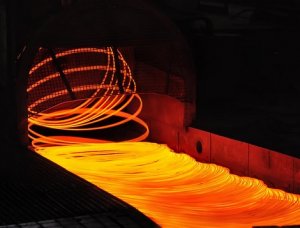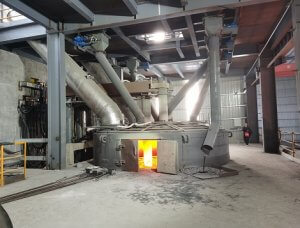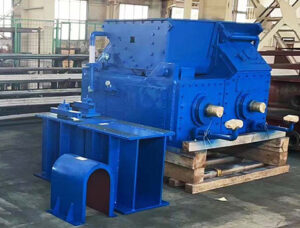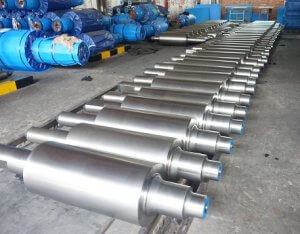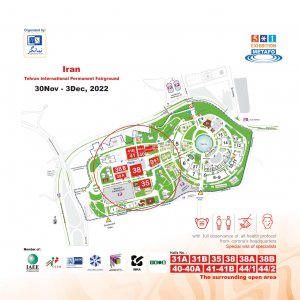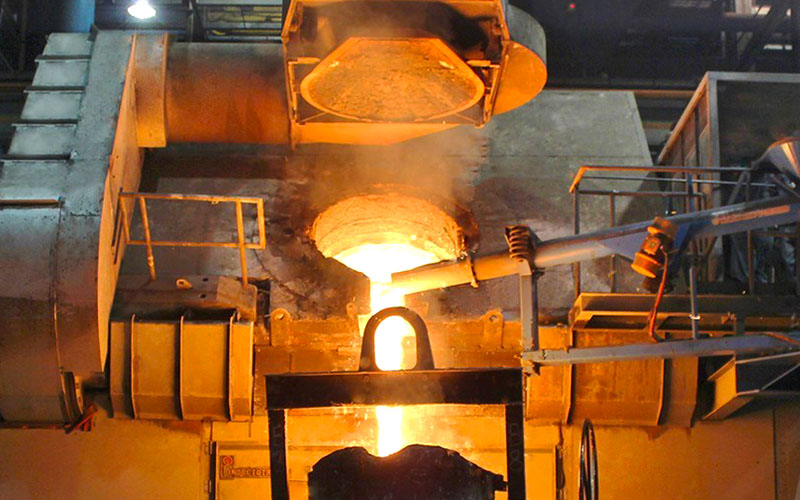Products
Exhibition
Industry News
Leakage Detection of the Induction Furnace
Author : hani Time : 2021/06/25The leak detection of the induction furnace is a barrier to ensure the safe use of the intermediate frequency furnace. It is located between the furnace coil and the furnace lining. When the molten steel penetrates into the furnace lining, an alarm will be generated in time to warn the operator of the furnace lining cracks or thinning, he should immediately repair or replace the furnace lining. So, what problems should be paid attention to in the leak detection of induction melting furnaces?
1. The principle of leak detection of foundry melting furnace
According to the difference of the lining thickness and the principle of different lining current values, the leakage of the intermediate frequency furnace can be judged by measuring the current value between the bottom electrode of the furnace substrate and the stainless steel mesh around the refractory mortar of the inner coil of the furnace lining.
When the lining is normal, the resistance is large, the current is small, and the corresponding parameters on the device display (or meter head) are small. If there is a phenomenon of low resistance of the furnace lining (the thinning of the furnace lining and the large-area leakage of molten metal will cause low resistance of the furnace lining), and the current is large, the corresponding parameters on the display (or meter) of the device will be large, if the data is too large to exceed the alarm parameters set by the user and the alarm device work alarms to realize the leak detection of the electrotherm induction furnace.
2. Precautions for the detection and installation of the leakage of the induction melting furnace
Before the lining is knotted, a layer of refractory mortar should be applied to the induction coil of the intermediate frequency furnace. A leak-proof stainless steel mesh layer should be laid between the refractory mortar and the furnace lining, commonly known as a probe. Laying the stainless steel mesh should ensure that there is a certain distance (4–8mm) between each stainless steel alarm probe. The purpose of separating a certain distance is to reduce the heating of the alarm probe and prevent the hot and melting of the alarm probe from causing molten iron to appear at the bottom of the furnace. The fixed alarm probe is pressed on the alarm probe with a piece of asbestos cloth with an area of about 500*500mm to prevent the alarm probe from shifting to varying degrees under the action of tension or during the construction process of feeding and knotting.
In addition, after pressing the probe, it will make it close to the bottom of the inductotherm induction furnace. The purpose is to ensure the thickness of the bottom of the furnace and the design capacity of the intermediate frequency electric furnace.
Secondly, it can also ensure the stability of the alarm probe during the construction of the bottom of the furnace. When fixing the alarm probe outside the crucible induction furnace, the insulation between the alarm wire and the furnace body should be considered. In addition to the insulating sleeve for the external alarm probe, the insulating gaskets should also be used. This is to prevent the ground wire connected to the alarm probe from falling off during the production process, which will cause the operator to form a series with the molten iron in the furnace and the furnace body during the melting process cause electric shock. After all treatments are completed, a static test must be carried out to confirm that the alarm line is fully connected.
3. Precautions for the use of leak detection of electrotherm induction furnace
The leak detection of the furnace may also cause false alarms during use:
(1). False alarm caused by wet lining. This situation usually occurs in the first few furnaces of a new furnace. At this time, the current generally rises gradually, but as the number of melting increases, it will gradually return to normal.
(2). Due to accidental ramming and damage to the insulation material during the construction of the induction melting furnace, the stainless steel electrode is in direct contact with the silica sand of the furnace lining, causing a false alarm.
(3). False alarm caused by short-circuit between the lead wires or short-circuit of the lead wires connected to the stainless steel electrode to the ground.
(4). Interference of induction electric potential. When the induction furnace is in operation, an induced electric potential will be generated between the molten iron and the stainless steel sheet electrode, especially in the case of high harmonics, it can rise very high and cause false alarms.
4. The detection and analysis of the leakage of the induction furnace
The false alarm of the leakage detection of the electric induction furnace is different from the normal alarm. The current will always be large, about 60% to 80% of the alarm current, and the alarm current will fluctuate accordingly with the temperature of the molten iron. The change process of the current lags behind the change process of the molten iron temperature for a period of time: When the possibility of false alarm is eliminated, use the lk file of the resistance meter to measure the resistance between the two poles. If the forward and reverse resistance values are very close, and less than 4kC2, and The thermoelectric potential is also less than 0.05V, it can be determined that the furnace lining has leaked, and the furnace must be shut down.


